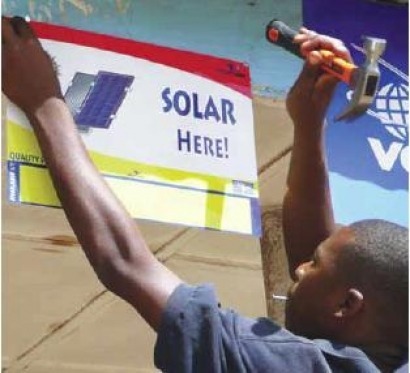
This statement is based on a comprehensive analysis of the cost and performance of key renewable power generation technologies released this month by IRENA. The analysis, presented in a series of five studies, covers solar photovoltaics (PV), concentrating solar power (CSP), wind power, hydropower and biomass for power generation. The studies were released by IRENA at its Council meeting in Abu Dhabi on 5-6 June 2012.
“A renewable revolution is underway. These papers show that the rapid deployment of renewable power generation technologies, and the corresponding rapid decline in costs, are sustaining a virtuous circle,” said IRENA’s Director-General, Mr. Adnan Z. Amin. “With these findings IRENA is helping to fill an important gap in the availability of objective, up-to-date information for decision-makers on the cost of generating electricity from these renewable power generation technologies”.
“Cost of financing is a major factor, and strategies to reduce the cost of capital are as important as engineering efforts to reduce installed costs,” Mr. Amin added. “Critically, the cost declines we have seen mean that policy support for renewables isn’t as costly as a static analysis of costs would imply.”
Solar PV costs, for example, have declined dramatically, with crystalline silicon PV module costs falling by over 60% in the last two years to as little as USD 1/watt. This is competitive with residential electricity tariffs in many countries with good solar resources. Cumulative installed capacity for solar PV grew by over 70% in 2011, and if this capacity growth can be maintained or increased, further cost reductions will occur.
Concentrating solar power (CSP) and solar PV are competing, but also complementary, technologies. In Spain and the United States, large-scale CSP without energy storage had lower installed costs than PV in 2010, IRENA’s studies show. Adding large-scale thermal energy storage increases installed costs, but allows a CSP plant to decouple electricity generation from the sunshine. The ability to schedule output of CSP plants with thermal energy storage opens up opportunities to cover peak demand in the evening, and make this technology even more competitive.
Around the world, large quantities of agricultural and forestry wastes go underutilised. Using them as a feedstock to provide power and heat can cost less than electricity from the grid. The most competitive projects produce electricity for USD 0.06/kWh.
Hydropower is a mature technology and the levelised cost of electricity (LCOE) of is generally low. The LCOE for large hydropower projects typically ranges from USD 0.02 to USD 0.19/kWh assuming a 10% cost of capital, making the best hydropower power projects the most cost competitive generating option available today.
In locations with good wind resources, onshore wind has become a highly competitive power generation option. Wind turbine prices have recently started to fall and this trend is likely to continue as low-cost manufacturers from emerging economies increasingly make their presence felt in the global market. The cost of electricity from the best sites in North America was in the range USD 0.04-0.05/kWh in 2010, competitive with or cheaper than gas-fired generation even in the so-called “golden age of gas”. In China, wind turbine costs are 50-60% cheaper than in North America.
The five new reports are just the beginning of IRENA’s analysis of renewable power generation costs. The datasets used will be supplemented over time with new project cost data collected from IRENA member countries, while the costs of renewables in end-use sectors, such as transportation, will be added. The combined data will form the basis for further IRENA publications and toolkits to assist countries with renewable energy policy development and planning.
For additional information:

